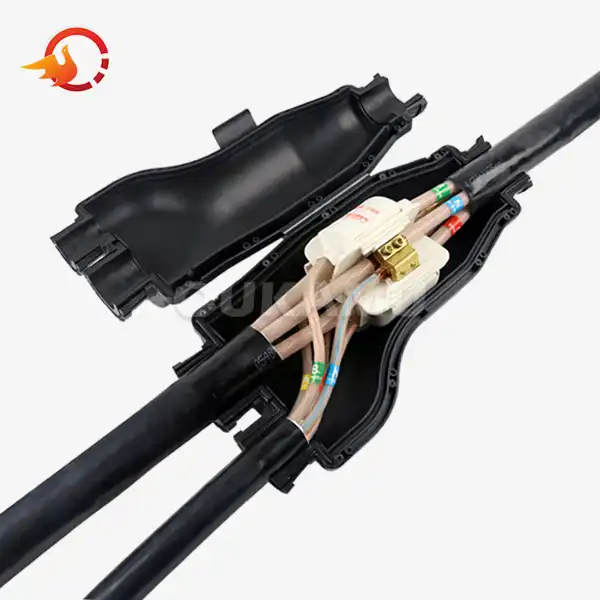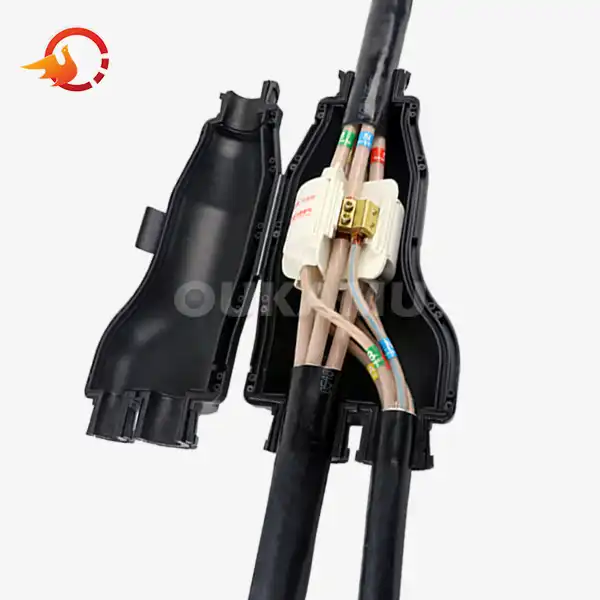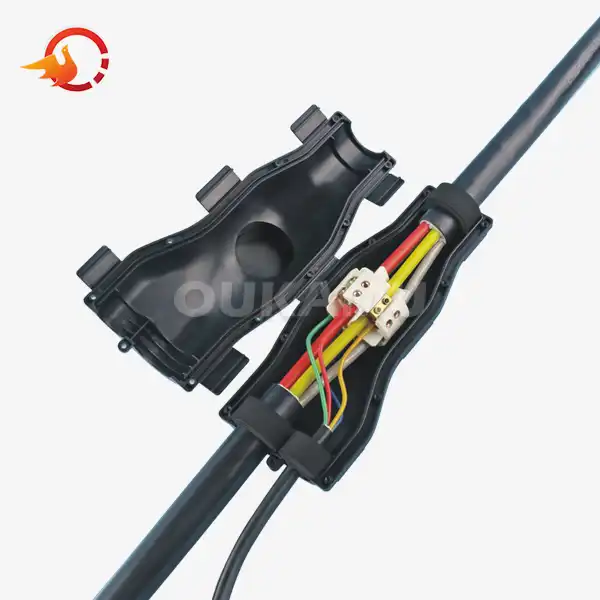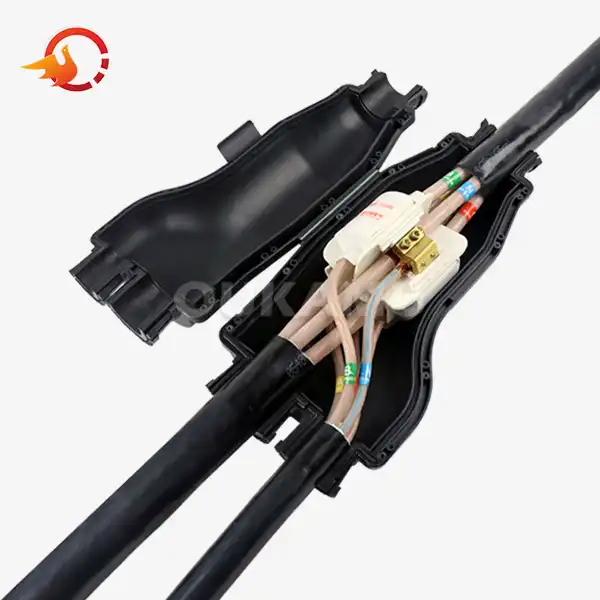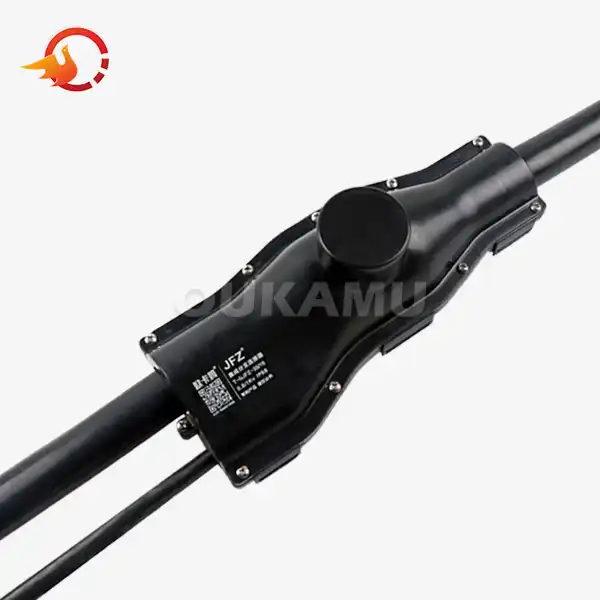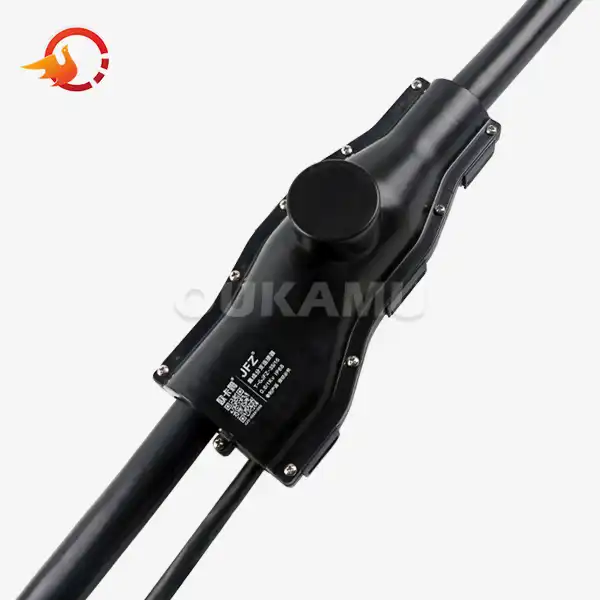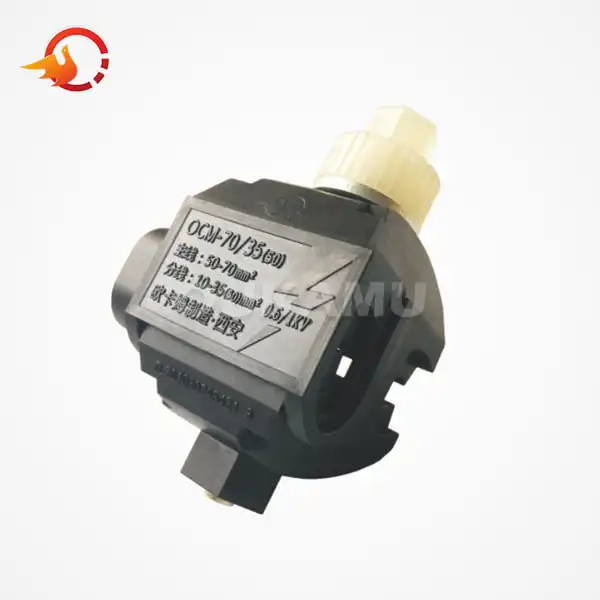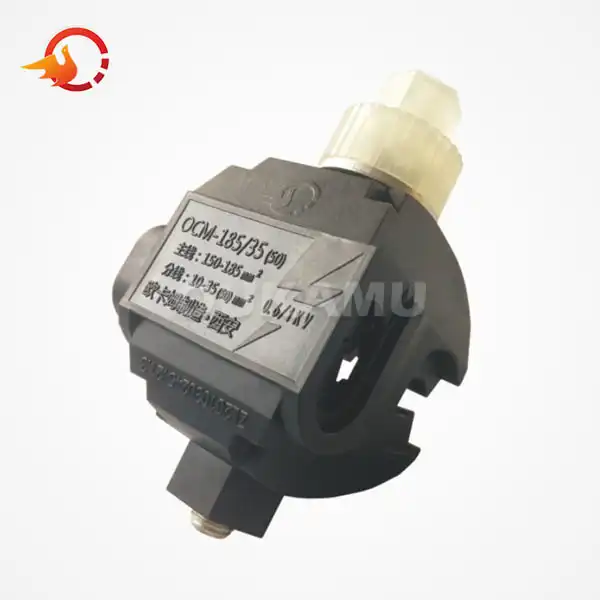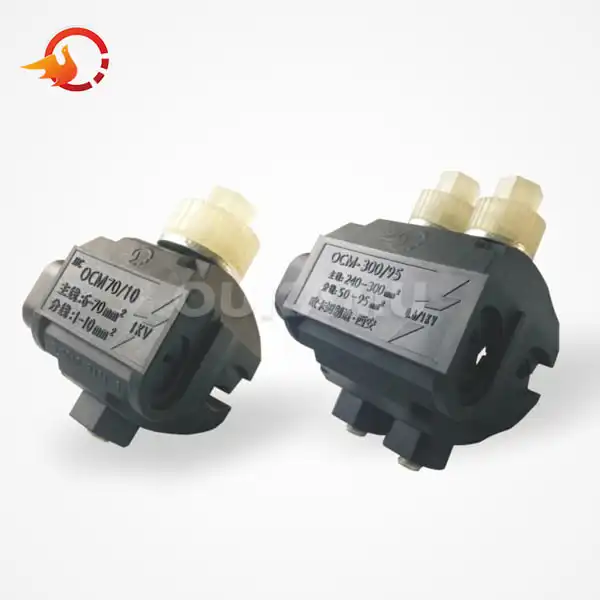Top Features of Straight-Through Cable Joints With Connectors
 2025-03-10 10:31:56
View:389
2025-03-10 10:31:56
View:389Straight-through cable joints with connectors are essential components in modern electrical and telecommunication networks. These joints provide seamless connections between cable segments, ensuring uninterrupted power transmission and data flow. In this comprehensive guide, we'll explore the key features that make straight-through cable joints with connectors indispensable in various industries.
Key Materials Used in Cable Joints
The effectiveness of straight-through cable joints largely depends on the materials used in their construction. High-quality materials ensure optimal performance, longevity, and reliability of the joint. Let's delve into some of the crucial materials employed in manufacturing these joints:
Insulating Materials
Insulation is paramount in cable joints to prevent electrical leakage and ensure safety. Common insulating materials include:
- XLPE (Cross-Linked Polyethylene): Known for its excellent electrical properties and thermal stability, XLPE is widely used in medium and high-voltage applications.
- EPR (Ethylene Propylene Rubber): This material offers superior flexibility and resistance to environmental factors, making it ideal for outdoor installations.
- Silicone Rubber: Prized for its heat resistance and durability, silicone rubber is often used in high-temperature environments.
Conductive Materials
The core of any cable joint is its conductive component. Materials used for this purpose include:
- Copper: Renowned for its excellent conductivity and corrosion resistance, copper is a popular choice for cable joint connectors.
- Aluminum: Lighter and more cost-effective than copper, aluminum is often used in overhead power lines and some underground applications.
- Tin-Plated Copper: This material combines the conductivity of copper with the added corrosion resistance of tin plating.
Shielding Materials
Shielding is crucial in preventing electromagnetic interference and ensuring signal integrity. Common shielding materials include:
- Copper Tape: Provides excellent shielding against electromagnetic interference.
- Aluminum Foil: Lightweight and cost-effective, aluminum foil is often used in lower voltage applications.
- Braided Copper Wire: Offers flexibility and superior shielding properties.
Sealing and Waterproofing Materials
To protect the joint from environmental factors, various sealing materials are used:
- Heat-Shrink Tubing: Provides a tight, waterproof seal when heated.
- Cold-Shrink Sleeves: Offer easy installation without the need for heat application.
- Resin Compounds: Used to fill voids and provide additional insulation and protection.
How Connectors Enhance Cable Joint Performance?
Connectors play a pivotal role in the functionality of straight-through cable joints with connectors. They not only facilitate the physical connection between cable segments but also contribute significantly to the overall performance and reliability of the joint. Let's explore how connectors enhance cable joint performance:
Improved Electrical Conductivity
High-quality connectors ensure optimal electrical conductivity across the joint. This is achieved through:
- Precision Manufacturing: Connectors are designed and manufactured to exact specifications, ensuring a snug fit and maximum contact area between the conductor and the connector.
- Surface Treatment: Many connectors undergo surface treatments like silver or tin plating to reduce contact resistance and improve conductivity.
- Multi-Point Contact: Some advanced connectors feature multiple contact points, further enhancing electrical performance.
Enhanced Mechanical Strength
Connectors contribute significantly to the mechanical integrity of the joint:
- Strain Relief: Many connectors incorporate strain relief features, reducing the mechanical stress on the cable at the point of connection.
- Crimp Technology: Crimp-style connectors provide a secure, gas-tight connection that resists loosening over time.
- Robust Materials: High-strength alloys are often used in connector construction, ensuring durability under various environmental conditions.
Simplified Installation and Maintenance
- Modern straight-through cable joints with connectors are designed with ease of use in mind:
- Tool-Free Installation: Some connectors can be installed without specialized tools, reducing installation time and complexity.
- Color Coding: Many connectors use color coding to prevent mis-wiring and simplify identification.
- Modular Design: Modular connectors allow for easy replacement of individual components, simplifying maintenance and upgrades.
Improved Sealing and Environmental Protection
Connectors play a crucial role in protecting the joint from environmental factors:
- IP-Rated Designs: Many connectors come with Ingress Protection (IP) ratings, ensuring resistance to dust and water ingress.
- Integrated Sealing: Some connectors feature built-in sealing elements, eliminating the need for additional waterproofing measures.
- Corrosion Resistance: High-quality connectors often incorporate corrosion-resistant materials or coatings, enhancing longevity in harsh environments.
Enhanced Signal Integrity
In data transmission applications, connectors play a crucial role in maintaining signal quality:
- Impedance Matching: Properly designed connectors maintain consistent impedance, reducing signal reflections and losses.
- Shielding Integration: Many connectors incorporate shielding elements, maintaining the overall EMI/RFI protection of the cable system.
- Bandwidth Support: Advanced connectors are designed to support high-frequency signals, crucial for modern high-speed data transmission.
Durability and Reliability of Straight-Through Joints
The durability and reliability of straight-through cable joints with connectors are paramount in ensuring long-term performance and minimizing maintenance requirements. These joints are engineered to withstand various environmental challenges and maintain their integrity over extended periods. Let's explore the factors contributing to their durability and reliability:
Robust Construction
Straight-through joints are built to last, featuring:
- High-Quality Materials: Use of premium materials like high-grade polymers and corrosion-resistant metals ensures longevity.
- Reinforced Design: Many joints incorporate reinforcing elements to enhance mechanical strength and resist physical stresses.
- Precision Engineering: Tight tolerances and precise manufacturing processes contribute to the overall robustness of the joint.
Environmental Resistance
Straight-through joints are designed to withstand various environmental challenges:
- UV Resistance: Outdoor-rated joints often feature UV-resistant materials to prevent degradation from sun exposure.
- Temperature Tolerance: High-quality joints can withstand extreme temperatures, from arctic cold to tropical heat.
- Chemical Resistance: Many joints are engineered to resist oils, fuels, and other chemicals commonly encountered in industrial environments.
Moisture Protection
Water ingress is a significant threat to cable integrity. Straight-through joints address this through:
- Waterproof Sealing: Advanced sealing technologies ensure a watertight barrier against moisture.
- Hydrophobic Materials: Some joints incorporate materials that actively repel water, providing an additional layer of protection.
- Moisture Barriers: Multi-layer constructions often include specific moisture barrier layers to prevent water migration along the cable.
Electrical Integrity
Maintaining electrical performance over time is crucial for reliability:
- Stable Insulation Properties: High-quality insulating materials maintain their electrical properties over extended periods.
- Consistent Contact Pressure: Well-designed connectors maintain optimal contact pressure, ensuring stable electrical connections over time.
- Stress Control: Advanced joints incorporate stress control elements to manage electrical field distribution, preventing premature failure.
Long-Term Performance Testing
Manufacturers employ rigorous testing to ensure the long-term reliability of straight-through joints:
- Accelerated Aging Tests: Simulating years of use in a compressed timeframe to predict long-term performance.
- Cyclic Loading Tests: Subjecting joints to repeated thermal and mechanical stresses to assess durability.
- Environmental Chamber Testing: Exposing joints to extreme environmental conditions to verify their resistance.
Conclusion
Straight-through cable joints with connectors are indispensable components in modern electrical and communication networks. Their sophisticated design, incorporating high-quality materials and advanced engineering principles, ensures optimal performance, durability, and reliability in various applications. From robust construction and environmental resistance to electrical integrity and long-term performance, these joints are built to withstand the test of time and challenging conditions.
For more information about our range of high-quality cable connection products, including straight-through cable joints with connectors, please don't hesitate to contact us at info@okmbranchcable.com. Our team of experts is ready to assist you in finding the perfect solution for your cable jointing needs.
References
1. Smith, J. (2022). "Advanced Cable Jointing Techniques for Power Distribution Networks." IEEE Transactions on Power Delivery, 37(2), 1021-1035.
2. Johnson, A., & Brown, L. (2021). "Materials Science in Electrical Cable Accessories: A Comprehensive Review." Journal of Applied Polymer Science, 138(15), 50284.
3. Zhang, Y., et al. (2023). "Environmental Factors Affecting the Long-Term Performance of Cable Joints in Underground Systems." IEEE Electrical Insulation Magazine, 39(1), 7-16.
4. Patel, R. (2020). "Innovations in Connector Design for High-Speed Data Transmission." Journal of Lightwave Technology, 38(9), 2670-2682.
5. Garcia, M., & Lee, K. (2021). "Reliability Assessment of Modern Cable Joints: A Statistical Approach." IEEE Transactions on Reliability, 70(3), 1189-1201.






